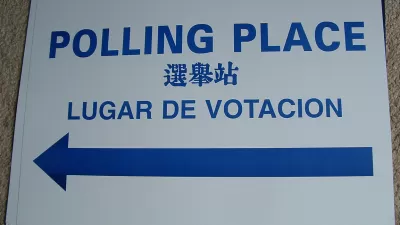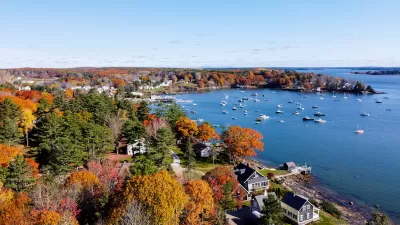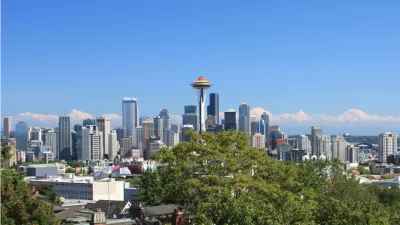Urban densities tend to encourage more liberal, tolerant values. Living among diverse neighbors can reduce fear and resentment, as everyday interactions break down stereotypes and misconceptions of ‘the other.’

Neeraj Bhatia, founder of The Open Workshop and assistant professor at the California College of the Arts, introduces an article titled "Environment as Politics":
One lesson of the U.S. presidential election is that we should forget about red and blue states, North and South, coastal coffeeshops and heartland diners. The geographic divide in American politics is closer to home. If you want to predict how someone will vote, ask, How near are your neighbors?
In the recent U.S. election, 49 of the 50 highest density counties voted for Hillary Clinton, and 48 of the 50 lowest density counties chose Donald Trump (nearly the same split as for Barack Obama and Mitt Romney four years earlier).
There are reasons for this that go beyond identity politics. Urban density has social and economic advantages that make cities attractive to liberals and that also condition liberal values over time. Living among diverse neighbors can reduce fear and resentment, as everyday interactions break down stereotypes and misconceptions of ‘the other.’ (Which is not to ignore that cities have their own problems with racial and economic segregation.
FULL STORY: Environment as Politics. New drawings of the relation between residential density and voting behavior.

Alabama: Trump Terminates Settlements for Black Communities Harmed By Raw Sewage
Trump deemed the landmark civil rights agreement “illegal DEI and environmental justice policy.”

Planetizen Federal Action Tracker
A weekly monitor of how Trump’s orders and actions are impacting planners and planning in America.

The 120 Year Old Tiny Home Villages That Sheltered San Francisco’s Earthquake Refugees
More than a century ago, San Francisco mobilized to house thousands of residents displaced by the 1906 earthquake. Could their strategy offer a model for the present?

In Both Crashes and Crime, Public Transportation is Far Safer than Driving
Contrary to popular assumptions, public transportation has far lower crash and crime rates than automobile travel. For safer communities, improve and encourage transit travel.

Report: Zoning Reforms Should Complement Nashville’s Ambitious Transit Plan
Without reform, restrictive zoning codes will limit the impact of the city’s planned transit expansion and could exclude some of the residents who depend on transit the most.

Judge Orders Release of Frozen IRA, IIJA Funding
The decision is a victory for environmental groups who charged that freezing funds for critical infrastructure and disaster response programs caused “real and irreparable harm” to communities.
Urban Design for Planners 1: Software Tools
This six-course series explores essential urban design concepts using open source software and equips planners with the tools they need to participate fully in the urban design process.
Planning for Universal Design
Learn the tools for implementing Universal Design in planning regulations.
Clanton & Associates, Inc.
Jessamine County Fiscal Court
Institute for Housing and Urban Development Studies (IHS)
City of Grandview
Harvard GSD Executive Education
Toledo-Lucas County Plan Commissions
Salt Lake City
NYU Wagner Graduate School of Public Service




























